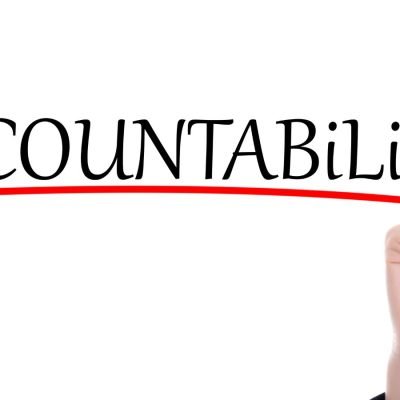Stakeholder engagement is vital in driving sustainable change and fostering positive outcomes. By involving stakeholders from various sectors, including government agencies, civil society organizations, communities, and businesses, we can tap into their expertise, diverse perspectives, and collective resources to tackle complex sustainability challenges. Effective stakeholder engagement goes beyond mere communication; it involves actively listening, learning, and collaborating to co-create solutions that align with the goals of all involved parties.
In this article, we will explore strategies for stakeholder engagement, including stakeholder communication, stakeholder involvement, stakeholder management, stakeholder collaboration, stakeholder relationships, and stakeholder participation. We will discover how stakeholder engagement can lead to sustainable success and examine key approaches for engaging stakeholders in decision-making processes and building trust and transparency.
Key Takeaways:
- Stakeholder engagement involves actively involving stakeholders in decision-making processes
- Collaboration and co-creation of solutions lead to sustainable success
- Open and transparent communication builds trust and fosters effective stakeholder relationships
- Engaging stakeholders from diverse sectors and perspectives leads to comprehensive and holistic solutions
- Stakeholder engagement is crucial for addressing complex sustainability challenges
Understanding Stakeholder Perspectives
To effectively engage stakeholders, organizations must gain a comprehensive understanding of their perspectives, interests, and values. This involves identifying and mapping primary and secondary stakeholders who are directly or indirectly impacted by policies or interventions.
Primary stakeholders are those individuals or groups who have a direct and significant interest in the organization’s activities. They may include employees, customers, shareholders, and suppliers. Understanding their perspectives is crucial as their opinions and feedback can greatly influence decision-making processes.
Secondary stakeholders, on the other hand, are individuals or groups who may not have a direct relationship with the organization but can still be affected by its actions. They may include local communities, interest groups, regulators, and the media. Involving them in the decision-making process ensures a more holistic and inclusive approach.
By understanding stakeholder perspectives, engagement strategies can be tailored to ensure inclusivity in decision-making processes. This helps organizations foster a sense of ownership among stakeholders and increases the likelihood of their inputs being considered.
Embracing participatory approaches, such as participatory research and multi-stakeholder platforms, enables collaborative decision-making. These approaches ensure that diverse expertise and experiences contribute to more comprehensive and sustainable outcomes.
Engaging stakeholders early and meaningfully fosters a sense of ownership and increases the likelihood of their inputs being considered.
When organizations truly understand stakeholder perspectives and involve them in decision-making processes, they create an environment where all voices are heard and valued. This leads to more informed and effective decisions that benefit both the organization and its stakeholders.
The following table provides an overview of primary and secondary stakeholders and their respective interests and perspectives:
| Stakeholder | Primary/Secondary | Interests | Perspectives |
|---|---|---|---|
| Employees | Primary | Job security, fair compensation, professional growth | Operational challenges, workplace culture, employment conditions |
| Customers | Primary | Quality products/services, competitive pricing, excellent customer service | Product satisfaction, brand reputation, customer experience |
| Local Communities | Secondary | Environmental impact, community development, social responsibility | Quality of life, sustainable development, community engagement |
| Regulators | Secondary | Compliance with laws, industry regulations, public safety | Legal compliance, risk management, industry standards |
By gaining a deeper understanding of stakeholder perspectives, organizations can develop engagement strategies that foster inclusivity and maximize stakeholder participation. This leads to more informed decisions and sustainable outcomes.
Building Trust and Transparency
Building trust and transparency is crucial in stakeholder engagement. It lays the foundation for open and honest collaboration, fostering strong relationships and enabling effective decision-making. By prioritizing communication and dialogue, organizations can create an environment that encourages meaningful exchanges and active listening.
Open and transparent communication is key. Providing clear and accessible channels for sharing information ensures that stakeholders are well-informed and can actively participate in discussions. This promotes open and transparent communication and helps to avoid misunderstandings or misinterpretations.
Incorporating dialogue that encourages open and transparent communication is essential. Allowing space for diverse opinions and perspectives helps to build trust and credibility among stakeholders. Active listening signals respect for their viewpoints, fostering an inclusive and collaborative environment.
By addressing power dynamics, organizations can give a voice to marginalized groups and amplify their contributions. Actively seeking inputs from these underrepresented stakeholders is crucial in achieving open and transparent communication and building trust.
Capacity-building initiatives play a vital role in empowering stakeholders to engage effectively. These initiatives provide necessary skills, knowledge, and resources to overcome barriers and actively contribute to decision-making processes. Through capacity-building initiatives, marginalized groups can strengthen their participation and make their voices heard, leading to more inclusive and equitable outcomes.

Benefits of Building Trust and Transparency
Building trust and transparency in stakeholder engagement offers several benefits, including:
- Enhanced collaboration and cooperation
- Increased credibility and legitimacy
- Fostering a culture of open and honest communication
- Empowered marginalized groups
- Improved decision-making processes
- Strengthened relationships and partnerships
Realizing the Power of Open Communication and transparent Communication
Organizations that prioritize open and transparent communication lay the groundwork for successful stakeholder engagement. By addressing power dynamics, engaging marginalized groups, and implementing capacity-building initiatives, they create an inclusive environment where all stakeholders can actively contribute their ideas and perspectives. This paves the way for informed decision-making, collaboration, and ultimately, sustainable impact.
| Benefits | Examples |
|---|---|
| Enhanced collaboration and cooperation | Joint projects and initiatives |
| Increased credibility and legitimacy | Improved reputation and stakeholder trust |
| Fostering a culture of open and honest communication | Regular feedback and transparent reporting |
| Empowered marginalized groups | Representation in decision-making processes |
| Improved decision-making processes | Evidence-based and inclusive decision-making |
| Strengthened relationships and partnerships | Long-term collaborations and shared goals |
Engaging Diverse Stakeholders for Sustainable Impact
Engaging diverse stakeholders is crucial for driving sustainable impact. By involving stakeholders from different sectors and perspectives, a comprehensive approach to decision-making can be achieved. Inclusive decision-making considers the unique perspectives, knowledge, and experiences of stakeholders, leading to more holistic solutions for interconnected sustainability issues.
One effective strategy for engaging diverse stakeholders is stakeholder analysis. Conducting a thorough stakeholder analysis helps identify key stakeholders, their interests, and their potential influence in decision-making processes. This analysis provides valuable insights that can inform tailored engagement approaches.
“Stakeholder analysis allows organizations to understand the diversity of stakeholders involved, which can help in designing appropriate engagement strategies and identifying potential challenges,” says Dr. Maria Rodriguez, a sustainability expert.
Tailored engagement approaches consider the specific needs and aspirations of different stakeholder groups. By acknowledging and valuing their perspectives, organizations can foster inclusive decision-making and create solutions that address the interconnected issues at hand.
In addition to tailored approaches, capacity building plays a crucial role in engaging diverse stakeholders effectively. Capacity building initiatives can enhance stakeholders’ understanding of sustainability challenges and empower them to actively contribute to decision-making processes. Building collaborative networks also encourages shared learning and innovation, enabling stakeholders to collaborate and co-create solutions.
“Collaborative networks help create synergies and leverage expertise from diverse stakeholders,” explains Dr. Sarah Thompson, a sustainability consultant. “This fosters a collective effort towards sustainable impact.”
By engaging diverse stakeholders and embracing inclusive decision-making, organizations can harness the power of collaboration and co-creation to drive sustainable impact and address complex interconnected issues.

- Conduct stakeholder analysis to identify key stakeholders, interests, and potential challenges.
- Develop tailored engagement approaches that address the unique needs and aspirations of different stakeholder groups.
- Implement capacity building initiatives to empower stakeholders and enhance their understanding of sustainability challenges.
- Build collaborative networks to foster shared learning, innovation, and collaboration.
- Promote inclusive decision-making to ensure that diverse perspectives and experiences contribute to comprehensive solutions.
By combining these strategies, organizations can create a more inclusive and sustainable future, where the voices of diverse stakeholders are heard, valued, and actively involved in shaping decisions and co-creating solutions.
Conclusion
Stakeholder engagement is the key to driving sustainable success for organizations. By actively listening to stakeholders, learning from their expertise, and collaborating effectively, companies can make informed decisions that lead to long-term organizational success. Engaging stakeholders from diverse backgrounds and perspectives brings collective wisdom, expertise, and resources to the table, enabling organizations to tackle sustainability challenges head-on.
Recognizing and valuing diversity is crucial in stakeholder engagement. Understanding stakeholder perspectives and building trust and transparency fosters open dialogue and strengthens relationships. By involving stakeholders in decision-making and co-creation of solutions, organizations tap into the full potential of stakeholder engagement, leveraging diverse insights for more sustainable outcomes.
To achieve sustainable success, organizations must embrace stakeholder collaboration as a strategic approach. By actively engaging stakeholders, organizations create a culture of inclusivity and mutual learning, ensuring that all voices are heard and considered. This collaborative approach not only drives more comprehensive and innovative solutions but also fosters long-term partnerships and trust among stakeholders, laying the foundation for sustainable success in the future.
FAQ
Why is stakeholder engagement important for sustainability initiatives?
How can organizations understand stakeholder perspectives?
How can trust and transparency be built in stakeholder engagement?
Why is engaging diverse stakeholders important for sustainable impact?
How does stakeholder engagement contribute to long-term organizational success?
Source Links
- https://www.futuretracker.com/post/engaging-stakeholders-in-your-sustainability-journey-best-practices-for-collaboration-and-communication
- https://www.smestrategy.net/blog/stakeholder-engagement-management-for-strategic-planning
- https://www.linkedin.com/pulse/s110-sustainable-impact-stakeholder-engagement-sandra-lim-mg







